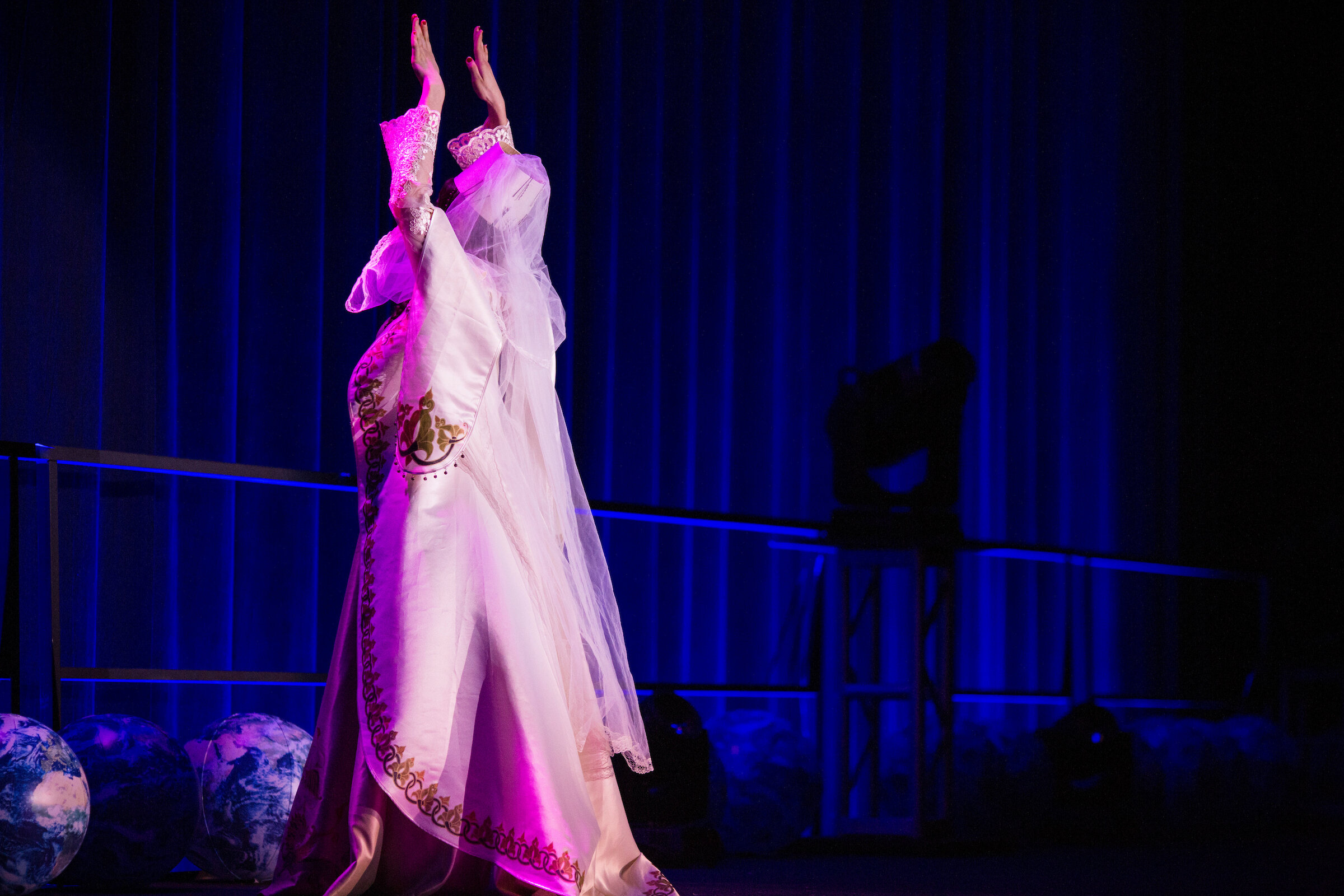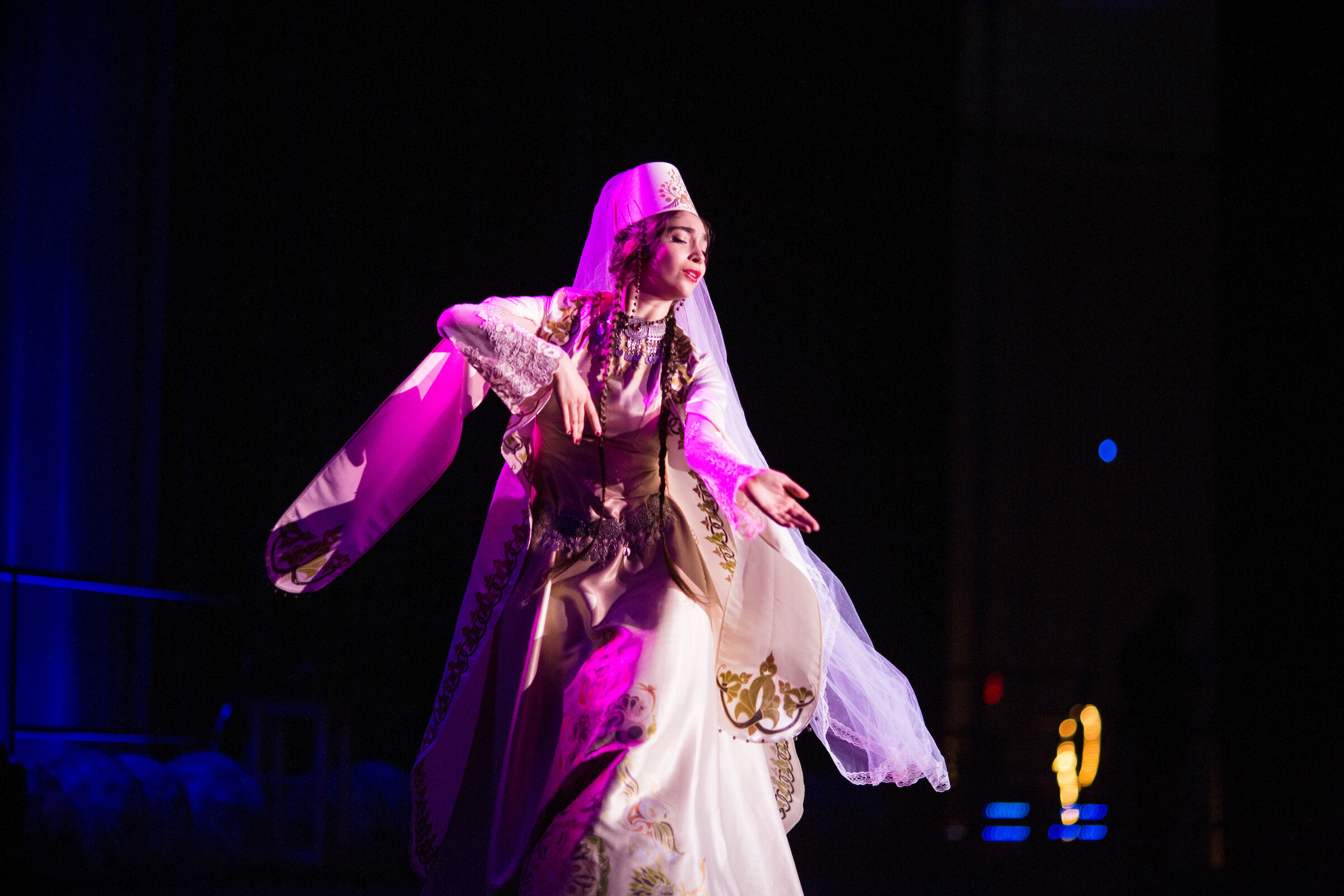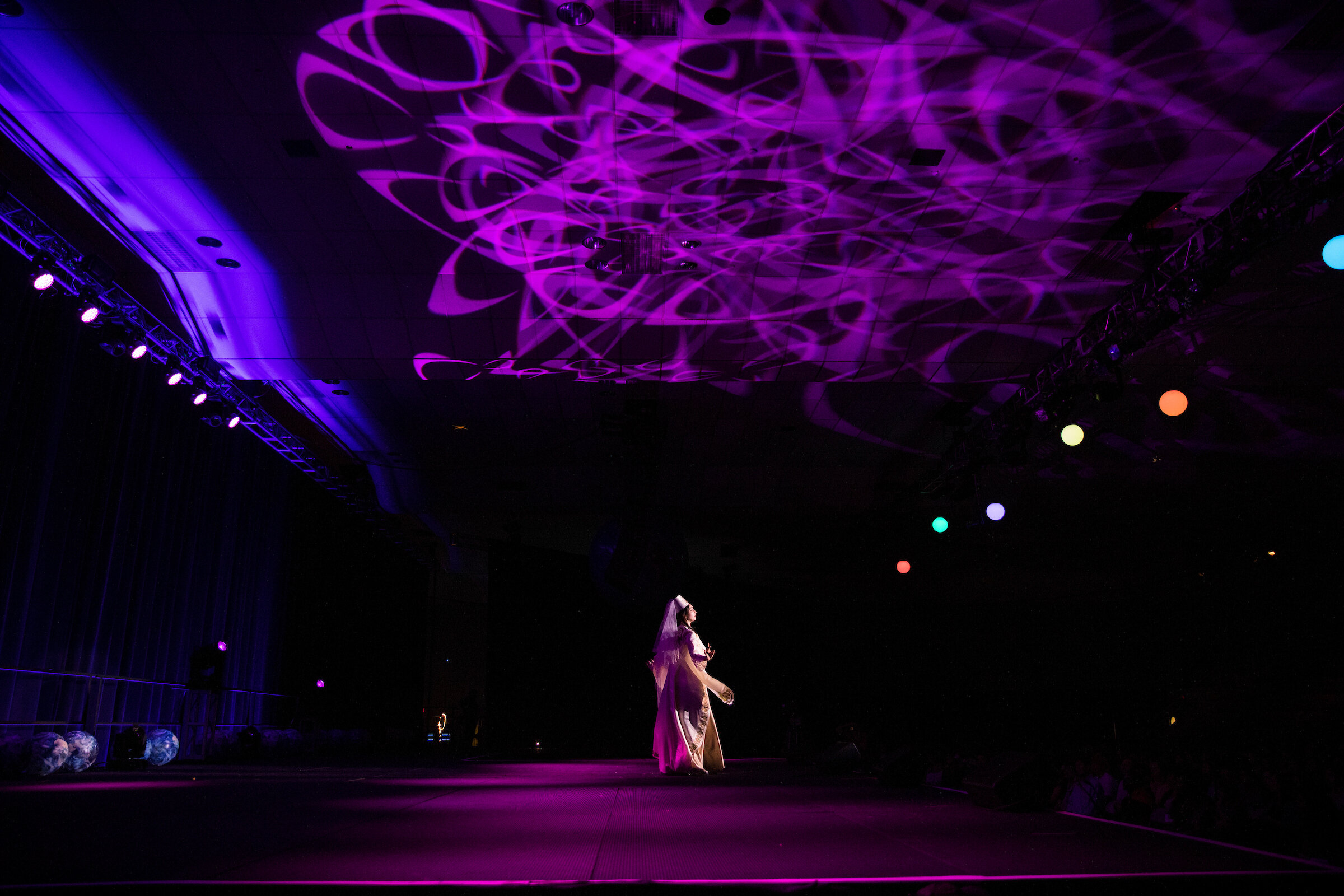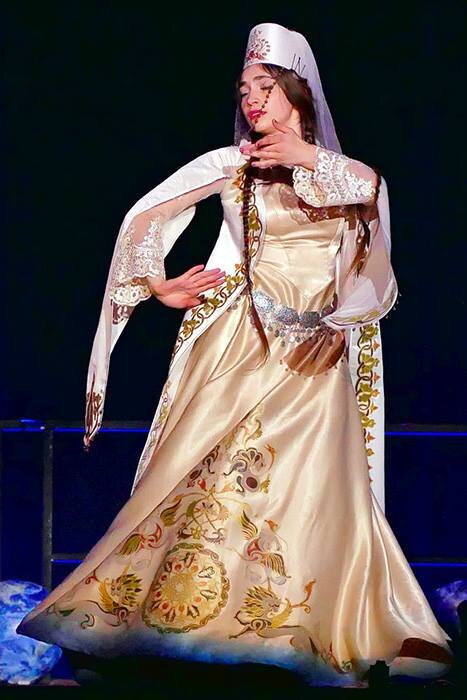
Kilikia
Revisiting Armenian Traditional Garments and Stories in times of pain
2016
Garment Design, Choreography, Performance, Image editing by Siranush.
Garment, 2 x 12 m creme silk, batik paint, acryl headpiece, 10 m white tulle, silver belt, earrings and neckpiece, 5 m lace. Sponsored by Teryan Cultural Center in Yerevan, Armenia.
“Every “nakhsh” (element of decor) on traditional garment carries an immense power and meaning“ — Lilit Melikyan
Bas relief on ruins of Armenian church of 6th century in Vayots Dzor, Armenia.
Dream it.
As a kid, I loved nature, painting, dressing up, making up fantasy stories and all sorts of secrets. Living in Armenia with its thousands-years long history, of course, it did not take me long to fall in love with archaeology and wandering around ancient churches, trying to make sense of signs on their ruins and understand the longings of the people in those ancient civilizations. I dreamt to be able to feel what they felt, talk the same language and return to these places the power and beauty they once had.
A variation of armenian alphabet with animalistic archetypes.
Learn it.
While exploring ancient Armenian semiotics (study of signs and symbols) I found a rich database in Matenadaran, a storage of hundreds of thousands of books and inlays from hundreds and thousands years ago. I learned that language, culture, semiotics, nature and beliefs and highly intertwined and journaled meanings of those symbols. I later got into Armenian traditional dance (Barekamutyun Dance Studio) and learned how those meanings may be transcribed into movement. Music, the melody of which comes from my ancestors made my heart tremble in its rhythm.
Lilit Melikyan in her design studio painting pomegranates — archetraditional fruit.
Build it.
I then volunteered at Teryan Cultural Center under supervision of Lilit Melikyan. She and her team taught me how semiotics and movement connect in Armenian traditional garments and I was eager to explore the limitations of meanings of garment semiotics. I soon realized that most of the garments do not possess symbols of animalistic nature, as if whole language would not have verbs. I then created drafts of such garment and Melikyan’s team implemented it though “batik” technology, creating a gorgeous garment at no cost.
Kilikia dance
It tells the story of the great Armenian Kingdom of Cilicia (in south coastal region of Asia Minor), which fell to invasions in the 14th century. The singers yearn for their homeland—they cry for a chance to return there, to see the stones, the castles and churches, the sunlight and to hear the song of birds, the wind—and they dream of Kilikia, which could not be replaced in their hearts with nothing else. This song and the dance is dedicated to the descendants of Armenian Genocide 1915, who are far away from their homeland, as well as all the refugees of past years’ events. The dance was performed by me at OneWorld festival-campaign at MIT in front of ~4000 people.




















Contributors
Design and dance by Siranush Babkhanova
Garment made by Lilit Melikyan’s team at Teryan Cultural Center
Song by The Beautified Project on Nahabed Rusinian’s adaptation of “My Normandy” by Frederic Berat and Armenian traditional music
Photography by Jonathan Richmond and Dominick Reuter



